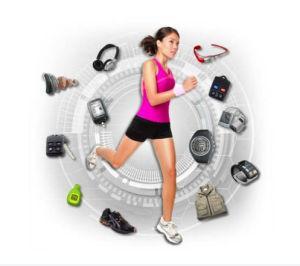In automotive domain, operation of secondary tasks like accessing infotainment system, adjusting air conditioning vents, and side mirrors distract drivers from driving. Though existing modalities like gesture and speech recognition systems facilitate undertaking secondary tasks by reducing duration of eyes off the road, those often require remembering a set of gestures or screen sequences. In this paper, we have proposed two different modalities for drivers to virtually touch the dashboard display using a laser tracker with a mechanical switch and an eye gaze switch. We compared performances of our proposed modalities against conventional touch modality in automotive environment by comparing pointing and selection times of representative secondary task and also analysed effect on driving performance in terms of deviation from lane, average speed, variation in perceived workload and system usability. We did not find significant difference in driving and pointing performance between laser tracking system and existing touchscreen system. Our result also showed that the driving and pointing performance of the virtual touch system with eye gaze switch was significantly better than the same with mechanical switch. We evaluated the efficacy of the proposed virtual touch system with eye gaze switch inside a real car and investigated acceptance of the system by professional drivers using qualitative research. The quantitative and qualitative studies indicated importance of using multimodal system inside car and highlighted several criteria for acceptance of new automotive user interface.
翻译:在汽车领域,操作次要任务,如进入通风系统、调整空调通风口和侧面镜子等,使驾驶者无法驾车。虽然手势和语音识别系统等现有模式通过减少路外视线的时间来便利执行次要任务,但往往需要记住一套手势或屏幕序列。在本文件中,我们提议了两种不同模式,使驾驶员能够使用一个带有机械开关和眼视开关的激光追踪器实际上触摸仪表显示仪表板。我们比较了我们拟议模式与汽车环境中常规触摸方式的性能,比较了代表性次要任务的指针和选择时间,并分析了在偏离车道、平均速度、所察觉的工作量变化和系统可用性方面对驾驶业绩的影响。我们发现,在驾驶和指向激光跟踪系统和现有触摸屏系统之间的性能方面没有显著区别。我们的结果还表明,使用眼视窗开关的虚拟触摸系统的驾驶和指向性能比机械开关要好得多。我们评估了拟议虚拟触摸系统的效率,在汽车内部的视视视开关开关上,并调查专业司机对系统接受该系统的接受程度,利用定性研究的数量和质量研究显示汽车内新汽车的用户的接受度。


